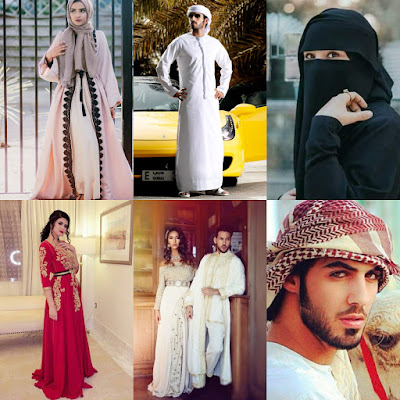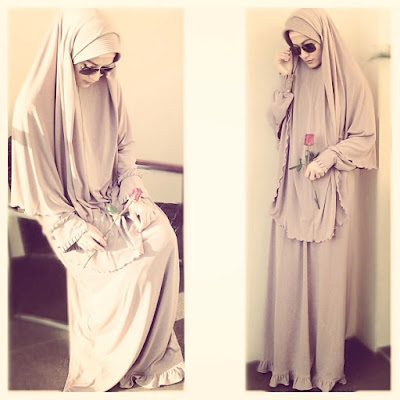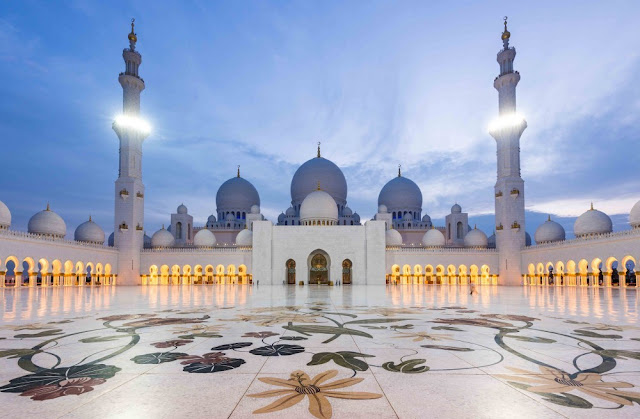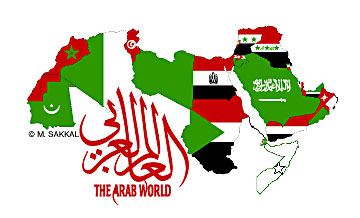Arab Clothing
Arab Clothing
The
Middle East is a variegated and colourful universe when it comes to
clothes and attires for both men and women. It is a complex reality
where local traditions and Western fashion mix. While the latter has
deeply influenced Arab countries, it is still possible to spot some
traditional garments.
In
this guide we will first deal with some of the most common
stereotypes about Arabs and clothing, then consider the traditional
garments worn in different countries, starting from Morocco down to
Oman and understand how the concept of “modest dress” drastically
changes from one country to another within the region. Finally,
you will have the opportunity to test how much you remember about
Arab clothes with a quick quiz.
If white robes and black veils
are the only things that pop in your mind when you think about Middle
Eastern clothes, then you should really read on…
DETERMINING FACTORS: AGE,LOCATION AND SOCIAL CLASS
Age
and location make a big difference when it comes to clothing in the
Middle East. On the one hand, younger people tend to wear Western
clothes and use their traditional outfits only for special occasions
such as weddings, religious celebrations or a pilgrimage, while the
older generations are more easily seen with traditional garments.
On the other hand,
people living in the cities are more attentive to the latest fashion
trends, while in smaller towns and rural contexts men and women still
prefer traditional attires because of their comfort and the protection
they offer from the sun, the wind and the sand.
A
third factor could be social class. On the one hand, designer clothes
from the West are very popular among the middle and upper class, while
traditional garments and more conservative attires might be more easily
found in popular neighbourhoods. While this could be true for certain
countries in the Levant and North Africa, the criteria most definitely
change for Gulf countries where all women and men wear similar clothes
and it is actually the quality and design of the abaya, an expensive bag
or a pair sunglasses to reveal the social class of the wearer.
STEREOTYPES
Before analyzing which clothes belong to which country we must clarify some general misconceptions related to Middle Eastern clothing, as well as introducing the basic terms of Arab fashion.
1) All Arab women wear hijab.
NO. This statement is wrong for two main reasons:
a. some Muslim women decide to wear a hijab and some let their hair uncovered
b. some Arab women are Christian or Jewish and thus might not follow the same clothing rules
2) The hijab is a headscarf.
YES. The term hijab is commonly used to refer to the headscarf worn by many Muslim women.
But the word hijab does
not only refer to the short veil wrapped around a woman’s head. Hijab is
in fact also a general term for modest attires which include head
covering.
3) There is only one kind of veil.
NO. The term veil includes a notable variety of head gears which come in a multitude of shapes, lengths and fabrics.
There are different kinds of veil and
women wear them not only as a religious or cultural sign of belonging to
a certain society, but also consider them an important fashion
statement. Hijabs have different styles and colours and women wearing a
hijab (muhajjabat in Arabic) are always up to date with the latest
trends, just as Western women know whether an item is out-dated or not.
A clear instance of how hijab fashion
changes and evolves is the so-called “Gamboo’a”, literally “Camel hump”.
It was really fashionable around 2008 when women sported voluminous
hijabs using a clip with a huge plastic flower (the gamboo’a) under the
headscarf. It soon became very popular, especially in the trendsetter
country of the region: the UAE. However, by 2011 it was already
considered out of fashion.
1. SHAYLA: it is a one-piece veil. A long scarf which is wrapped around the head, pinned under the chin and gently rests on the shoulders. It is usually worn on top of a cap of a matching colour, which helps to keep the hijab in place. The rim of the cap may or may not be shown according to the woman’s preference.
It is the most common kind of hijab, particularly in the Gulf countries (with the exception of Saudi Arabia)
2. AL-AMIRA: a two-piece veil. It is very easy to wear and it is made of a head cap and a tubular scarf worn on top of it. The main difference between Shayla and Al-Amira is the shape of the scarf (rectangular for the shayla, tubular for the al-amira) and the head cap (hidden or only slightly visible in the former, while a big portion is left exposed in the latter)
It can be seen in the Middle East, even though it is particularly widespread in the South East Asian Muslim community.

3. NIQAB: a face veil which is usually worn with a headscarf and tied behind the head. It leaves a gap for the eyes only, even though some women add an eye veil which allows them to see without revealing their eyes.
It is not unusual to see a niqab in North Africa or the Levant, but it is most commonly used in Saudi Arabia

4. KHIMAR: is a long veil which covers the head and the chest till the waist. The face is left uncovered.
It is not as popular as the previous types of head covering; still some women wear it in their daily life.
4) Some Arab women wear a burqa.
NO, generally speaking.
This is an item characteristic of Pakistan and Afghanistan and was
imposed by the Talibans and it is not paramount in the Arab world, even
though some countries such as Yemen have their own version of the burqa
(or burghaa) which differs from the Afghan one.
It is not to be confused with the niqab, which is indeed commonly used in the Middle East. The differences:
- The niqab is usually black and merely a face veil, the burqa is mostly light blue in colour and covers the whole body
- The niqab usually leaves the eyes uncovered, while the burqa has a net over them
5) All Arab men wear a long, white robe and a coloured headscarf.
NO. Only men in the Gulf are used to daily wear the headscarf and the white robe.The headscarf (ghuthrain the Gulf, keffiah in the Levant) is tied on the head with a black piece of cord (aghal) and is used with a skullcap called thagiyah which keeps the hair in place.
The white robe, called thoub/thobe, dishdasha or kandora, is the main item of clothing for Gulf men and is generally worn with a pair of loose fitting trousers called sirwal, either long or short. While the keffiah is also used in Palestine and Jordan, the dishdasha remains the landmark of Gulf men’s fashion.
DIFFERENT FOLKS, DIFFERENT STROKES
Now that we have some basic vocabulary related to men’s and women’s fashion in the Arab world, it is time to see what their attire can tell us about the country of origin and, in some cases, their social class, too.
We can identify 4 main areas when it comes to clothes: North Africa, the Levant, the Gulf and finally, Sudan.
NORTH AFRICA
Walking through the streets of Rabat or Tunis we see many men and women donning Western clothes.So how can we tell if they are actually Moroccan or Tunisian, only by the way they are dressed?It is actually quite straightforward once we identify those robes or head gears that are unique to that country.
Morocco
Many Moroccans still wear the djellaba, a wide and comfortable hooded tunic with long sleeves which can be considered as a part of the national heritage. They are more colourful for women, while they are made in earth tones for men.Moroccans might accompany the tunic with the traditional slippers called balgha, which come mostly in yellow, but other colours are used, too.
MORROCAN WOMEN’S CLOTHING
Kaftan: an overdress similar to the djellaba but
without hood. It is usually worn in festive occasions or weddings, it is
not used in daily life.
MOROCCAN MEN’S CLOTHING
Gandora: a short sleeved robe, lighter than the djellaba

Tunisia
Spotting a traditional outfit in Tunisia may be quite challenging, especially in the cities. But a trip to the medina in Tunis or attending a marriage could give you a chance to admire the beauty of Tunisian traditional clothes.The two most representative items are:
TUNISIAN WOMEN’S CLOTHING
Sefsari: while it is rarely worn, there are indeed some elderly women that still use this long, white veil. Head for the old part of Tunis if you want to see one
TUNISIAN MEN’S CLOTHING
Chachia: some older men still wear this flat red hat made of wool. It is a symbol of the Tunisian traditions
Algeria
Much like Tunisia, Algeria has also been heavily influenced by the West when it comes to clothes, thus seeing a typical Algerian attire might be difficult. Elderly men and women are most likely to wear these two typical items of clothing:ALGERIAN WOMEN’S CLOTHING
Karakou: Algerian women love colours and embroideries. This traditional embroidered jacket has made its big return on the Algerian fashion scene and is now used on important occasions and weddings.
ALGERIAN MEN’S CLOTHING
Gandora: it is typical of Algeria too, but usually made of brown or white wool
Libya
Young Libyans normally don jeans and t-shirts. However, it is sufficient to leave the city and approach the rural areas inhabited by the Berbers to see the original Libyan attire.LIBYAN WOMEN’S CLOTHING
Haik: this veil, almost forgotten in Algeria, is still worn by some Libyan Berber women, as well as Moroccan. It is a long white piece of cloth which covers the whole body
Holi:a white cloak wrapped around the body, usually worn with the tagiyah
Egypt
Walking through Cairo means observing a wide range of clothes and attires: from women wearing a niqab, through hijabi girls and up to ladies who don’t cover their hair at all. Men’s clothing doesn’t tend to be as varied since polo shirts and jeans are worn by most male Egyptians. This notwithstanding, the inhabitants of some peripheral area of Cairo, as well as the great majority of the so called fellahin (farmers) still prefer more traditional and airy attires.EGYPTIAN WOMEN’S CLOTHING
Gallabya: much like the djellaba and the gandoura, the gallabya is also a long tunic without buttons or a proper neck. It comes in colourful and embroidered variations for women and in neutral colours for men.
EGYPTIAN MEN’S CLOTHING
Taqiya: this skullcap is usually worn under the ghuthra (men’s headscarf) in the Gulf and the Levant as well. The particularity of Egypt is that some men were this cap on its own
THE LEVANT
Similarly to the countries in the Maghreb, Western clothes are predominant also in the Levant,especially in big cities such as Beirut or Damascus. However, there are also many local garments and attires that can be seen in the cities themselves, as well as the countryside.We have shown that all the countries in al-Maghreb have some items of clothing in common such as the gandura or the barnous, a hooded djellaba. The same is true for the Levant. Nonetheless, there are always some particular headgears or tunics which are unique to a certain country.
Jordan
Niqab, hijab, jilbab, jeans, t-shirts, khimar: these are only a part of the vast array of clothes worn by Jordanians. While in the western part of the capital Amman, Western style clothes are widespread; it is common to see more traditional and conservative attires in the area of downtown and eastern Amman, as well as in smaller towns.The following garment is a symbol of the Jordanian heritage and values:
JORDANIAN MEN’S CLOTHING
Shemagh mhadab: this red checked keffieh is widespread in the Gulf, too, especially in Saudi Arabia. It is the colour that is typical of Jordan as it stands for the values of the Bedouin culture: the bigger the tassels, the higher the importance of the wearer.

Palestine
Like Jordan the beauty of traditional Palestinian clothes has almost been forgotten, as most people in cities such as Ramallah or Jerusalem wear jeans and t-shirts if they are men; jilbabs, Western clothes and hijab if women.However, there is one headgear which has come to represent this country, especially thanks to Yasser Arafat:
PALESTINIAN MEN’S CLOTHING
Black and white keffieh: this colour pattern has always been unique to Palestine and it even became a fashionable item in America and Europe in the early 2000s. Nowadays it still represents support for the Palestinian cause
Lebanon
Among all the Arab countries Lebanon probably deserves the title of most fashionable and stylish. A large numberof women decide not to wear a hijab, especially in the capital Beirut. Try your luck and see if you can spot some Lebanese still wearing this traditional garment:LEBANESE MEN’S AND WOMEN’S CLOTHING
Sherwal: these baggy and comfortable trousers are also commonly seen in the Gulf under a dishdasha. They are one of the few traditional garments still worn by some Lebanese countrymen. They are used on their own, no thobe needed.They have also been recently reinventedin a more fashionable female version.
Syria
Much like the other Levantinian countries, Syria has seen more and more men and women opting for Western style clothes. The majority of women wear a hijab and some sport a jilbab or even an abaya and niqab, while some older men can still be seen with keffieh and long tunics.Traditional clothes were once famous for the quality of their fabrics and the beauty of their embroideries, often in black and red. However, they have basically disappeared from the urban areas and are worn in the countryside only on special occasions.
SYRIAN WOMEN’S CLOTHING
Thob: differently from the Gulf, this is considered a female garment in Syria. It is dyed black and red and often accompanied by a belt of the same colour
SYRIAN MEN’S CLOTHING
Sirwal: just like Lebanon, these trousers cannot miss from any traditional attire. They are long, loose and come in black or neutral colours
Jordanian and Syrian thobes share the same colours: red and black. A group of Syrian men wearing their traditional clothes
THE GULF
When it comes to the Gulf it is pretty easy to spot its citizens as, differently from most other countries in the region, they have kept wearing their traditional clothes.All men in the Gulf usually use a long, white tunic called dishdasha which helps keep the body cool in the heat of the region. This tunic is usually worn with short sherwal trousers and a ghuthra, alight, white headscarf or the keffieh, in the colder season.
Women wear wide, long robes called abayas, usually in association with a shayla hijab that shows some hair and a niqab.
Even if the thobes for the men and the abaya for the women may seem the same everywhere in the region, there are actuallysome small details that allow us to understand whether we are talking to a Qatari, a Kuwaiti or an Omani.
Saudi Arabia
Saudi men and women have kept wearing their traditional items of clothing and adherence to the moderate Islamic dress for both sexes is an absolute must. Most people wear the following:SAUDI WOMEN’S CLOTHING
Niqab: if niqabs are sometimes seen in the Levant and North Africa, they become predominant in Saudi Arabia, where only some cities like Jeddah and Dammam accept women walking around without the face veil
SAUDI MEN’S CLOTHING
Shumagh: it is the Saudi name for the typical Jordanian keffiah which is worn by many Saudis in winter to replace the ghuthra
Dishdasha: the typical Saudi thobe resembles a long shirt. It has a two buttoned neck, it is tight and made to have cufflinks (kabak)
Qatar
Even if only 25% of the 2.1 million inhabitants have actually Qatari origins, there is a very strong national identity which is expressed through clothes, as well. Qatari fashion is similar to the Saudi Arabian one, but it is more colourful, especially on the women’s side.The most common garments are:
QATARI WOMEN’S CLOTHING
Al-darraa: some women wear this local version of the black abaya
QATARI MEN’S CLOTHING
Shumagh: the Qatari shumagh is typically white and has an African taste to it with two tails on the back, stiff in the front part, it resembles a cobra snake
Dishdasha: the Qatari dishdasha comes in shiny fabrics and usually has a pocket
Kuwait
The 1.4 million Kuwaitis really differentiate themselves from the 2.3 million expats that also live in the country and not only because of the language they speak, but above all because of the way they dress. Here are the typical Kuwaiti garments:KUWAITI WOMEN’S CLOTHING
Dara’a: the name is the same as the Qatari dress, but it comes in a more colourful version and different models. It is usually used for weddings, traditional dances and so on
KUWAITI MEN’S CLOTHING
Shumagh: the Kuwaiti shumagh is predominantly white and characterised by a scale shape when observed from the front
Dishdasha: the Kuwaiti dishdasha has a distinguishing one button collar
Bahrain
This country might not be as big as Saudi Arabia, but it has certainly nothing left to be desired when it comes to history, biodiversity and, of course, clothes. Their traditional clothes are in line with the other Gulf countries, but have some special features which differentiate them.BAHRANI WOMEN’S CLOTHING
Abaya: look out for red abayas with golden embroideries because they are only worn in special occasions
Red: is the national colour and it is not unusual to see women wearing accessories of this colour on important days
BAHRANI MEN’S CLOTHING
Shumagh: white is the most widespread colour. Worn loose, it lets the head move freely
Dishdasha: also the Bahraini thobe is very comfortable, loose and witha shirt collar
UAE
The UAE has a complex fashion panorama. While Dubai is the most progressive and up to date among the emirates, the other areas are more conservative in terms of clothing.Fashion here has evolved incredibly fast and if in the past sirwal and burqa were a must for women, they have been substituted by the abaya and even the white thobe now comes in a variety of colours.
EMIRATI WOMEN’S CLOTHING
Abaya: Dubai is the land of fashionable and trendy abayas decorated with sequins, embroideries and ribbons
EMIRATI MEN’S CLOTHING
Shumagh: white or in the Jordanian red and white pattern. Very simply styled and left loose over the shoulders
Kandora: the UAE name fordishdasha. It is collarless and features a long tassel called tarboosh
Oman
The southern sultanate really cares about the integrity of its national heritage, clothing included. That’s why the traditional dress is compulsory for all employees in the public sector. Western style clothes have no space in the country, with the exception of tourists of course.Traditional Omani attires could not be complete without:
OMANI WOMEN’S CLOTHING
Abaya: the black abaya with some colourful details is most common in the capital Masqat
OMANI MEN’S CLOTHING
Kumma: there is no space for the shumagh in Oman, substituted by the traditional cap which comes in different colours and has holes to keep the head cool
emen
This country has preserved an extraordinary heritage in terms of history and traditions. Clothes are just one expression of how much Yemenis still follow their customs and their outfits show the region they come from: the mountainous North, the coastal area of the West and South or atribal area. Still, it is not uncommon for men to wear Western clothes in the cities.This is what makes their attires different from all the other Gulf countries:
YEMENI WOMEN’S CLOTHING
Balto: it is the Yemeni version of theabaya.It is widespread in the urban areas
Lithma: more or less the Yemeni version of the niqab
Sitara: literally “curtain”, is the traditional dress of the capital Sana’a. Nowadays, only elderly women wear this colourful piece of cloth which covers them from head to toes
YEMENI MEN’S CLOTHING
Shawl: this headscarf, differently from the shumagh, is wrapped around the head just like a turban. It comes in many different colours
Jambiya: it is not unusual to see this dagger hanging from men’s belts, especially in the northern areas. The more valuable ones have been used by the same family for generations. There are also cheaper daggers manufactured in China
SUDAN
The style of Sudan is unique and easily recognisable. Sudanese wear many of the garments which are widespread in the rest of the Middle East, but in a brighter and more colourful version which reminds us of other African countries.While Western clothes are indeed used especially in the cities, some still prefer the loose fitting traditional items.
Let’s see what items of clothing you cannot miss if visiting Sudan:
SUDANESE WOMEN’S CLOTHING
Thobe: differently from the Gulf, this big piece of cloth is an item for women. It is wrapped all around the body and the head. It comes in varying patterns and colours, according to the occasion. It is generally donned by older women. Alternatives are: abayas, long skirts and dresses
Hijab: being a Muslim country, all Sudanese women wear a headscarf, sometimes underneath the thobe
YEMENI MEN’S CLOTHING
Jalabiya: just like the Egyptians, also Sudanese men like beingcomfortable wearing this loose fitting tunic. They usually add a decorated scarf calledimmah
Taqiya: the skullcap is worn without the keffieh to keep the head cool, again just like Egypt































This is the one of the perfect Gym Wear in Saudi Arabia I saw in blogs.
ResponderEliminar